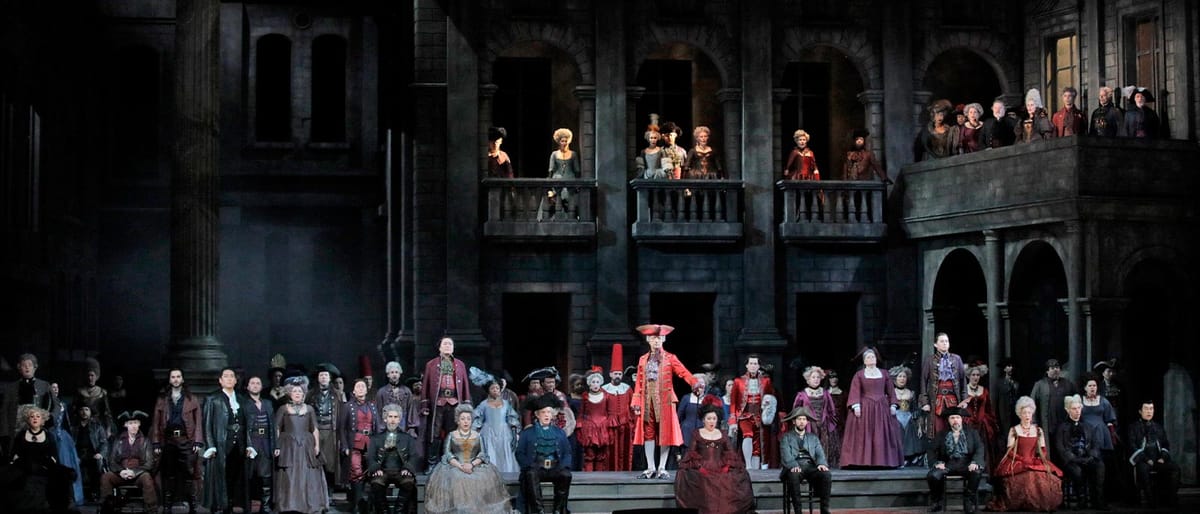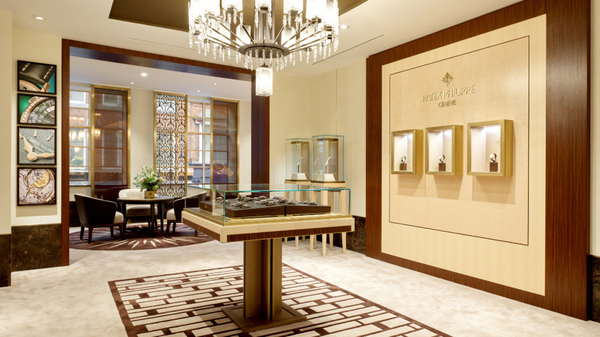All You Need to Know About the Romeo and Juliet Opera
Romeo and Juliet, composed by Charles Gounod in 1867, is a Romantic opera based on Shakespeare’s tragedy Romeo and Juliet. Set in Verona, it tells the story of star-crossed lovers from rival families. With powerful arias and emotional depth, Gounod’s work brings the timeless tale to life.

Who composed the opera "Romeo and Juliet"?
- Romeo and Juliet was composed by the French composer Charles Gounod. Gounod, a prominent figure of French Romantic opera, is also known for his famous opera Faust. His musical style is characterised by its lyrical melodies and rich orchestration, making him an ideal composer to bring Shakespeare’s tragic love story to life.
What is the original French title of the opera "Romeo and Juliet"?
- The original French title of the opera is Roméo et Juliette. As the opera was composed for a French audience, the libretto and all the musical settings are in French. It closely follows the story of Shakespeare's play, albeit with some adjustments to fit the operatic form.
In what year did "Roméo et Juliette" première?
- Roméo et Juliette had its premiere on April 27, 1867, at the Théâtre Lyrique in Paris. The opera debuted during a time of great cultural activity in the city, coinciding with the Exposition Universelle (World's Fair), which attracted international attention and added to the opera's initial success.
Which playwright’s work is the opera "Romeo and Juliet" based on?
- The opera is based on William Shakespeare’s Romeo and Juliet, one of the most famous and frequently performed tragedies in the English literary canon. The play, written in the late 16th century, explores the themes of forbidden love, fate, and family conflict, which are preserved and intensified in the opera.
Who wrote the libretto for "Roméo et Juliette"?
- The libretto for Roméo et Juliette was written by Jules Barbier and Michel Carré, both of whom were well-known French librettists of the time. They had previously collaborated with Gounod on Faust. Barbier and Carré's libretto retains the essential elements of Shakespeare’s play but makes some modifications, such as the addition of arias and scenes to enhance the opera’s musical and emotional impact.
How many acts are in Gounod’s opera "Romeo and Juliet"?
- Gounod’s opera consists of five acts. Each act moves through different emotional and narrative stages of the story, from the joyous opening in Act 1 with the Capulet ball to the increasingly tragic events that unfold in the subsequent acts, culminating in the lovers' death in the final act.
What is the setting of "Roméo et Juliette"?
- The opera is set in Verona, Italy, during the Renaissance period. Verona serves as a backdrop for the bitter feud between the Montague and Capulet families, whose enmity is central to the plot. The Italian Renaissance setting adds a layer of historical richness, providing a sense of grandeur, passion, and dramatic intensity that aligns with the opera’s themes.
What are the names of the two feuding families in the opera?
- The two feuding families are the Montagues and the Capulets. Romeo belongs to the Montague family, while Juliet is a Capulet. The rivalry between these two powerful families creates an insurmountable obstacle to the love between Romeo and Juliet, making their relationship both dangerous and deeply tragic.
Who are the main characters in the opera "Romeo and Juliet"?
- The main characters in the opera are Romeo (a Montague) and Juliet (a Capulet), who are the protagonists and central figures in the love story. Other key characters include Mercutio, Romeo’s close friend known for his wit; Tybalt, Juliet’s cousin and a fierce opponent of Romeo; and Friar Laurence, a key figure who helps the lovers in their ill-fated attempts to escape their families' feud.
Which role does the soprano sing in "Roméo et Juliette"?
- In Roméo et Juliette, the soprano sings the role of Juliet. This role requires great vocal agility and emotional range, particularly in arias like "Je veux vivre," where Juliet expresses her youthful joy and desire for freedom. Throughout the opera, the soprano must capture Juliet's transformation from an innocent young girl to a woman deeply in love and ultimately willing to sacrifice everything for Romeo.
Who sings the role of Romeo in the opera?
- The role of Romeo is sung by a tenor. This role demands a strong, lyrical voice capable of conveying both the ardent passion of a young lover and the deep despair of the opera’s tragic ending. Some of Romeo’s most famous moments include his love duets with Juliet, particularly in the "balcony scene" and the opera’s final act.
What is the significance of the aria "Je veux vivre" in the opera?"
- The aria "Je veux vivre" is one of Juliet’s most famous and beloved arias, appearing in Act 1. In this aria, Juliet celebrates her youth, vitality, and desire to live freely, unburdened by the expectations and constraints of her family. It contrasts with the more serious and tragic tone of the later acts, highlighting Juliet’s transformation as she falls in love and becomes consumed by her tragic fate.
Which character is known for the famous "Queen Mab" speech in the opera?
- In the opera, as in Shakespeare’s play, Mercutio is known for the "Queen Mab" speech. This whimsical, imaginative speech occurs in Act 1 and serves to display Mercutio’s wit and scepticism about love and dreams. Gounod’s musical treatment of this speech is lively and energetic, capturing Mercutio’s playful nature.
What is the main theme of "Roméo et Juliette"?
- The main theme of the opera is the power and tragedy of forbidden love. Romeo and Juliet's love is pure and passionate, but it is doomed from the start due to the hatred between their families. The opera also explores themes of fate, destiny, and the consequences of longstanding feuds, as well as the innocence of youth destroyed by violence.
What dramatic event occurs in Act 3 of "Roméo et Juliette"?
- Act 3 is marked by the dramatic duel between Tybalt and Mercutio, in which Mercutio is killed. In a fit of rage, Romeo avenges his friend’s death by killing Tybalt. This moment is pivotal because it sets in motion the events that lead to the tragic conclusion, as Romeo is subsequently banished from Verona for Tybalt's murder, separating him from Juliet.
How does Act 4 of the opera contribute to the tragedy?
- Act 4 deepens the tragedy as Juliet, desperate to avoid her arranged marriage to Paris, turns to Friar Laurence for help. He provides her with a sleeping potion that will make her appear dead, allowing her to escape with Romeo. This act sets the stage for the tragic misunderstanding that leads to the deaths of both lovers in the final act.
How does the opera's conclusion differ from Shakespeare's play?
- While the overall story and tragic ending of the opera are faithful to Shakespeare’s play, the opera’s conclusion places a greater emphasis on the emotional and lyrical expression of the lovers’ final moments. In the opera, Romeo arrives at Juliet’s tomb, believing she is dead, and drinks poison. When Juliet awakens, she finds Romeo dying. In their final duet, they express their undying love before Juliet stabs herself, dying beside Romeo.
What role does Friar Laurence play in the opera?
- Friar Laurence is a pivotal character in both the play and the opera. In Roméo et Juliette, he serves as the lovers' confidant and helps devise the plan to reunite them by giving Juliet the potion that will make her appear dead. His intentions are good, but his plans ultimately fail, leading to the tragedy. His role is often sung by a bass, emphasising his solemn and wise nature.
Which character is the primary antagonist in the opera?
- Tybalt serves as the primary antagonist in Roméo et Juliette. He is Juliet’s fiery and aggressive cousin, and his hatred for Romeo and the Montagues drives much of the conflict. His duel with Romeo’s friend Mercutio and his subsequent death at Romeo’s hands set the tragic events in motion.
What is the musical style of Gounod’s "Roméo et Juliette"?
- Gounod’s opera features a rich, Romantic musical style, characterised by lush orchestration, sweeping melodies, and a focus on expressing deep emotions. Gounod’s use of lyrical arias, intimate duets, and dramatic ensemble scenes helps to heighten the intensity of the story. The opera balances moments of joyful celebration, such as in the Capulet ball scene, with darker, tragic elements that foreshadow the inevitable fate of the lovers.
How does the opera portray the theme of fate?
- The theme of fate is woven throughout the opera, much like in Shakespeare's play. Romeo and Juliet’s love seems doomed from the start, and despite their efforts to escape their families’ enmity, they cannot avoid their tragic destiny. The sense of inevitability is underscored by the music, particularly in the recurring themes that foreshadow their deaths.
What is the significance of the "balcony scene" in the opera?
- The "balcony scene" in Act 2 is one of the most iconic moments in both the play and the opera. In the opera, this scene is transformed into a lyrical duet where Romeo and Juliet declare their love for each other. The music in this scene is tender and passionate, capturing the intensity of their feelings. This duet is one of the highlights of the opera, showcasing the beauty and tragedy of their love.
Which vocal parts are featured in the opera's ensemble scenes?
- The ensemble scenes in Roméo et Juliette feature a variety of vocal parts, including soprano (Juliet), tenor (Romeo), baritone (Mercutio), bass (Friar Laurence), and mezzo-soprano (supporting characters). The chorus also plays a significant role, often representing the citizens of Verona, and adding to the dramatic intensity of the large-scale scenes, such as the Capulet ball or the public brawl in Act 3.
How is the character of Juliet portrayed in Gounod’s opera?
- Juliet is portrayed as a vibrant, youthful character at the beginning of the opera, full of life and joy, particularly in her aria "Je veux vivre." As the story progresses, she becomes more serious and determined, deeply in love with Romeo and willing to defy her family to be with him. Her character transitions from carefree innocence to tragic heroine, culminating in her tragic death alongside Romeo in the final act.
What is the role of the chorus in "Roméo et Juliette"?
- The chorus plays a significant role in the opera, often representing the collective voice of Verona’s citizens. They appear in scenes such as the Capulet ball and the street brawl, adding to the opera’s dramatic scale. The chorus helps to heighten the tension and conflict in the story, particularly during moments of public confrontation, and they provide a contrast to the intimate, personal scenes between Romeo and Juliet.





